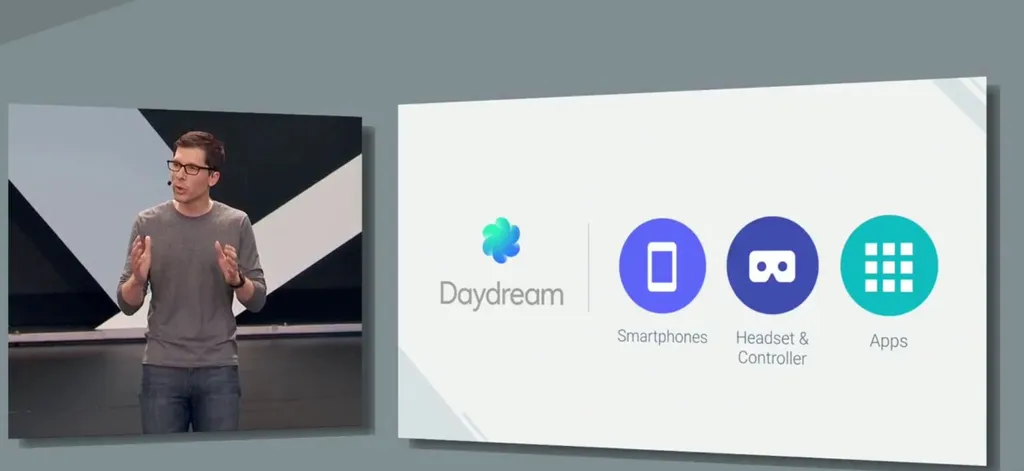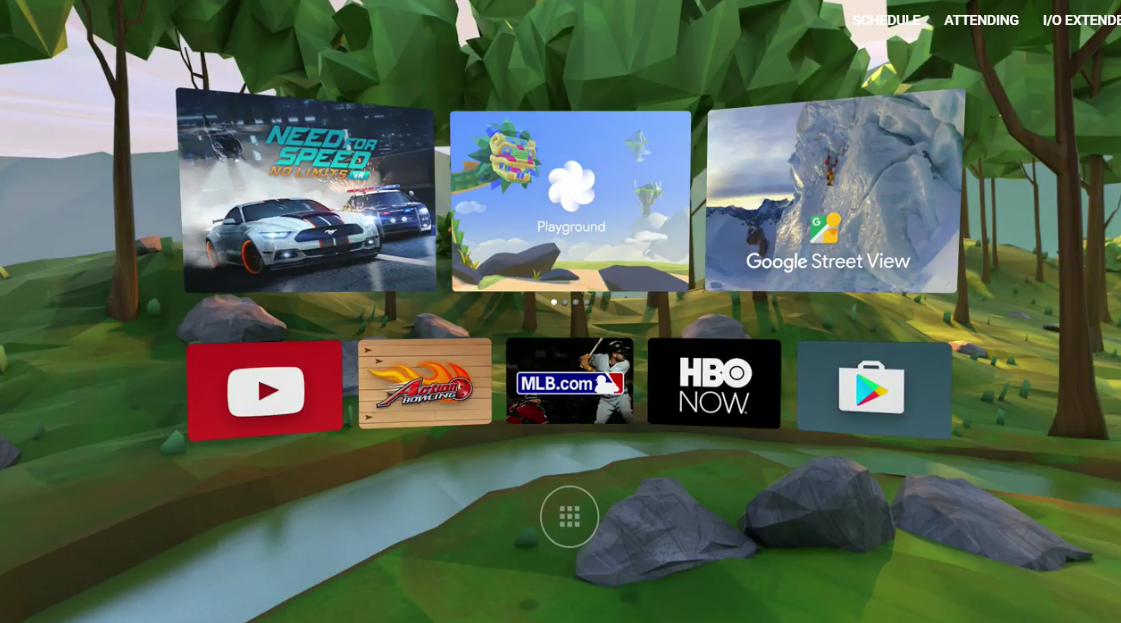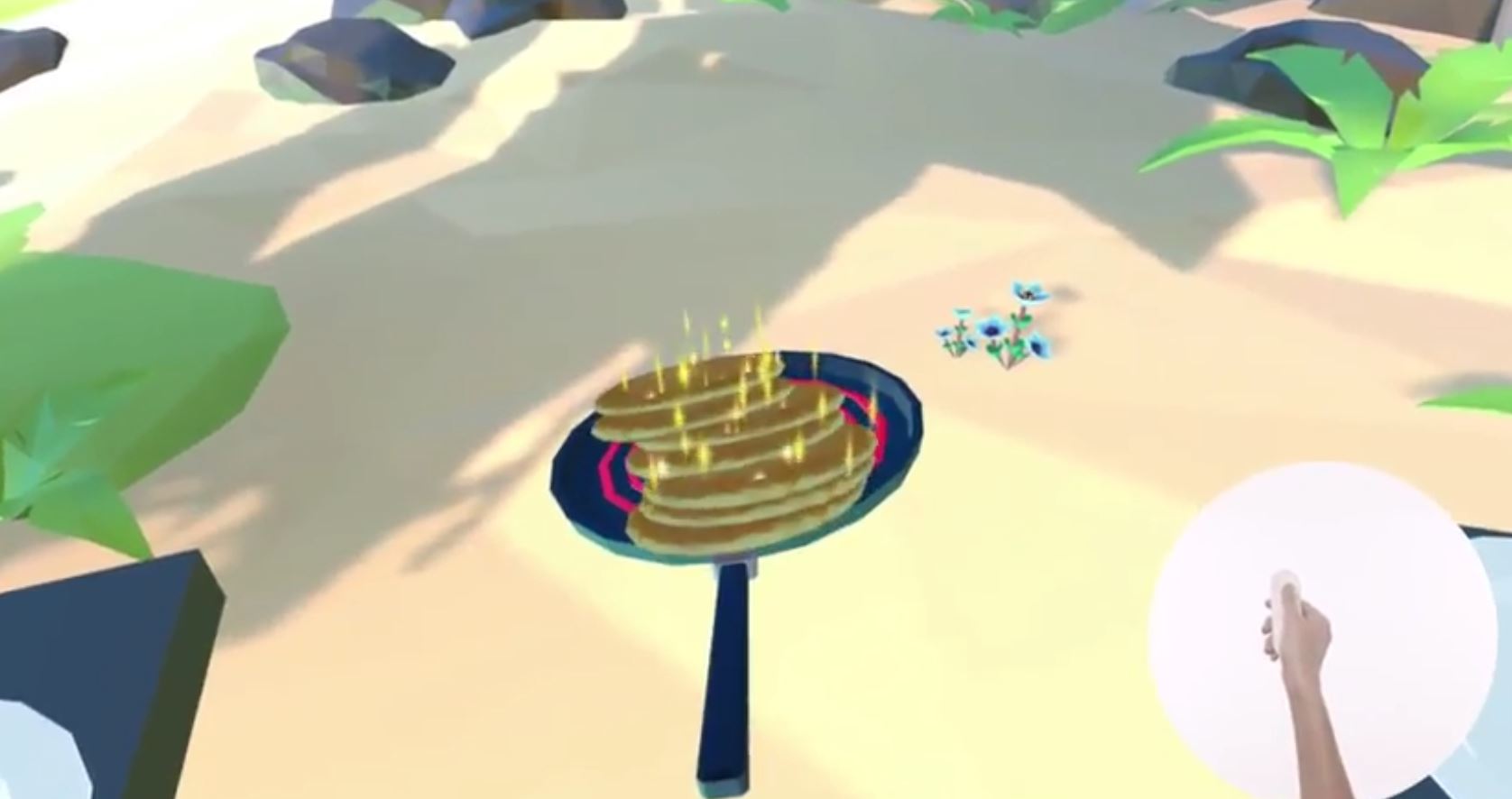To the disappointment of many, Google Vice President of Virtual Reality Clay Bavor did not announce the much-rumoured (and now discredited) standalone VR HMD at today’s Google I/O keynote.
Instead, the company announced a new platform for VR on the upcoming Android N to live on called Daydream. Much like Google’s pre-existing philosophy of creating specs and then pushing the job of building hardware to other manufacturers, the group is providing the boundaries for the initial public push of VR on Android, and letting third-parties build the phones for it.
But that doesn’t mean that the standalone HMD isn’t happening. Indeed, Bavor tantalising teased us in his talk, stating that Daydream “will encompass VR in many shapes and sizes” as it evolves. What it seems that Bavor is suggesting is that there will be much more that Google will announce in terms of its own hardware down the line. Google Tango has been a card up the company’s sleeve for quite some time, for example, and we expect for that hardware to be integrated both into its phones (Nexus handsets) and perhaps its own HMD. There’s plenty of potential on that proprietary front.
This does suggest, however, that we’ll be waiting a while before Google’s own VR kit is revealed. With the company partnering with huge electronic names like Samsung, HTC and Huawei, Daydream Ready phones – as they’re to be called – will no doubt form the foundation of this first wave for the platform. If Google is partnering with Gear VR creator Samsung in particular, we’re not sure it would want to overshadow that partnership with its own HMD straight away.
Daydream is launching this Fall, and you can expect it to very much focus on those partners at first. Hopefully that will pave the way for the company to come out with its own updated device later down the line. Whether we’re talking next I/O or one of the many to follow in the next few years? That’s a lot harder to speculate on.
Ultimately we have to question exactly when it would be viable for Google to release a dedicated, standalone mobile VR HMD. If rumours of the kit offering a superior experience to Gear VR are to be believed, then you could reasonably assume such a device might cost the combined price of that device and the smartphone to run it, coming out to around $800. That’s Vive territory, and would make for stiff competition right now. Maybe it’s better to wait for a much more viable, smaller price tag.
Besides, there was still hardware to get excited about today. That new motion controller could represent a genuine step forward for mobile VR gaming, with the distance between its gaze and controller-based experiences ever widening with high-end positional-tracked content for HTC Vive and Oculus Touch. We’re not suggesting this controller is up to snuff with those systems, but it will certainly help bridge that gap somewhat.
But there’s no reason to be disappointed; this is the groundwork for things to come. Today’s keynote hinted at an exciting future in which we see the tying together all the small projects Google has been working on: Computer Vision with Google Photos, NLP with Parsey McParseface, and Google Voice API all bundled nicely into messaging app called Allo, for example, all have VR potential. Applying these services into a Daydream isn’t a wild stretch of the imagination, especially since typing is still such a big issue. It goes to show that there’s plenty to get excited about in the here and now for Daydream, rather than the hardware that may one day be.
Until then, there’s always Cardboard, right?
To learn more about the details that Daydream will be bringing about, tune in to the VR at Google talk, once again hosted by Clay Bavor tomorrow at 9 AM PST.






























